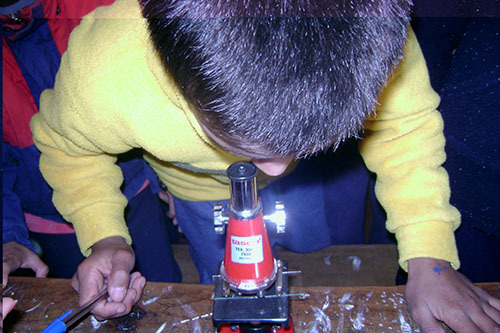
How did the Principals of School No. 20 of Campana (Buenos Aires) significantly improve student engagement with Science in their classrooms? School No. 5 of Ensenada (Buenos Aires) had a student absentee rate of over 20%. So how did the Principal Patricia Velez solve the problem? Twenty five per cent of teachers had at least 10 absent days per month at Ignacio Colombres School (Tucuman). Discover the tactics Principal Monica Romano used to reduce absenteeism? These are just some of the inspiring stories and lessons from Argentina we shall share today in The Global Search for Education
It is my pleasure to welcome once again to our global series Dr. Silvina Gvirtz (Executive Director of Conectar Igualdad, Researcher at the National Scientific and Technological Research Council (Conicet), and Professor at the University of San Martín)

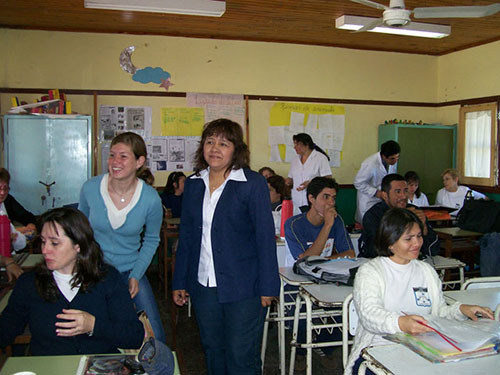
Silvina, what is your simplest definition of a good school?
A good school is one that all the students can access without discrimination. It’s an institution where all students graduate without dropout or retention. It’s a place where they learn meaningful content and where they enjoy learning. It’s a place that allows them to keep studying at the next level. To recognize a good school, you should check four significant dimensions: internal efficiency (dropout rates, retention rates, graduation rates); academic achievements (measured with different tools); organizational climate; and necessary conditions (infrastructure, didactic resources, etc.)
For these items, the principal, along with all the members of the team, should be real leaders and be able to build a diagnosis and set out goals and actions for improvement.
Can you walk me through some specific examples of the problems faced by poorer schools in Argentina?
Yes. One problem is the avoidance of teaching Science. At School No. 20 of Campana (Buenos Aries), principals found that lessons were given once per month, when they are supposed to be given twice per week in the first cycle and three times in the second. They found enough good intentions, but skills to improve classes with sciences were missing. So they enacted a training program for the teachers that led to fundamentally reshaping the classroom experience. They also added other topics such as electricity and sound, and brought trial and error exercises into classes, methods much more enriching than the ones proposed in manuals. The student experience shifted and grew brighter and more impassioned.
The direct contact with actual physical phenomena was the key to developing topics in more depth. One of the best experiences happened with fourth grade students, when we asked them how sound was produced. When they knew the answer was through vibration, they started to experience what happened with objects that surrounded them. In the process, new questions began to arise, such as “what materials does sound travel through best?”

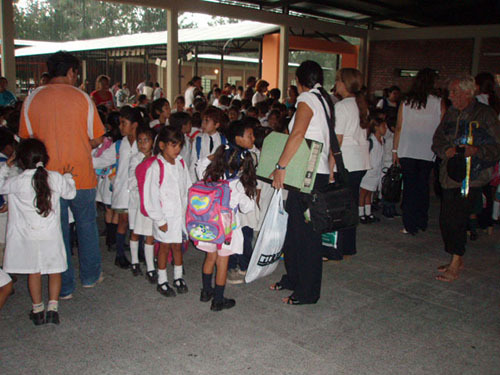
Insightful. Hands on experience with the sciences made a big difference, along with re-education of the teachers.
Correct. Another major problem schools face is absent students. It can be hard to know how much to interfere with this problem, as it can be a domestic one. At School No. 5 of Ensenada (Buenos Aries), we had an absentee rate of over 20%. Principal Patricia Veléz noticed that some kids refused to attend school, and that parents didn’t put much effort into it. Most of the kids belonged to families of low income. Teachers talked with the parents. Then the staff implemented a new procedure: “If students are absent for three days and parents don’t notify us, someone from the office will go to the student’s home. If the case persists, the school will appeal to the judicial system. Now families know that they won´t receive their Universal Childhood Entitlement (poverty relief assistance) if their kids don´t attend school.”
The school also offered extra support prior to daily classes in order to promote attendance and learning. A year later, absenteeism was down to 3 percent.
Another school with high absentee rates, Ignacio Colombres School (Tucumán), used a similar tactic to turn things around. Principal Mónica Romano saw her school as a place where neither students nor teachers were attending. 25% of teachers had at least 10 absent days per month.
“We saw the opportunity to reduce absenteeism by making sure every teacher knew the importance of continuity. When they understood they were harming the future of our kids, and they felt heard, they started to come every day.” After this, absentee rates dropped to 0%.
But the problem with students was far more complicated. “Some students didn’t have any shoes to go to school in. It was then we realized that we had to give students in school what they lacked at home. If the student was absent for more than 2 days, we went to his or her house to see what was going on. Their parents understood that their kids had to go to school; the only way for them to have a future was to have an education. And for that to happen, we turned our school in the school of abundance where opportunities begin to be possible.”

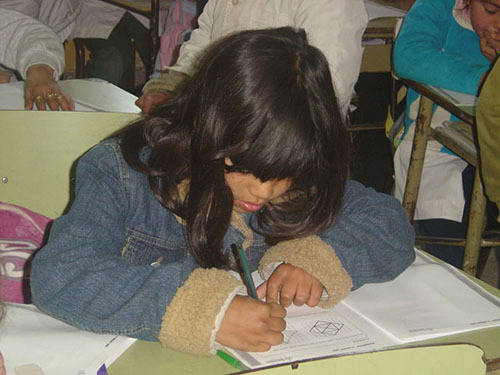
Following up on the absent child’s home life seems to have made a significant difference.
Yes. Another big problem is high levels of retention. Elizabeth Urra, at No. 77 School (Las Heras, Santa Cruz), identified a cause: “30% of our students were retaking the same year. We realized we were only paying attention to the students that had no problem with their subjects, and forgetting about the students that needed us most. That created 2 problems: high levels of retention and over-age students. That was when we started working with the real school we had and not only one part. We implemented better pedagogically designed classes and extra homework for kids that were doing badly. The students started to do better in every subject. We even had a teen mom that came back to finish school.”


(All photos are courtesy of Silvina Gvirtz)
Join me and globally renowned thought leaders including Sir Michael Barber (UK), Dr. Michael Block (U.S.), Dr. Leon Botstein (U.S.), Professor Clay Christensen (U.S.), Dr. Linda Darling-Hammond (U.S.), Dr. MadhavChavan (India), Professor Michael Fullan (Canada), Professor Howard Gardner (U.S.), Professor Andy Hargreaves (U.S.), Professor Yvonne Hellman (The Netherlands), Professor Kristin Helstad (Norway), Jean Hendrickson (U.S.), Professor Rose Hipkins (New Zealand), Professor Cornelia Hoogland (Canada), Honourable Jeff Johnson (Canada), Mme. Chantal Kaufmann (Belgium), Dr. EijaKauppinen (Finland), State Secretary TapioKosunen (Finland), Professor Dominique Lafontaine (Belgium), Professor Hugh Lauder (UK), Professor Ben Levin (Canada), Lord Ken Macdonald (UK), Professor Barry McGaw (Australia), Shiv Nadar (India), Professor R. Natarajan (India), Dr. Pak Tee Ng (Singapore), Dr. Denise Pope (US), Sridhar Rajagopalan (India), Dr. Diane Ravitch (U.S.), Richard Wilson Riley (U.S.), Sir Ken Robinson (UK), Professor PasiSahlberg (Finland), Professor Manabu Sato (Japan), Andreas Schleicher (PISA, OECD), Dr. Anthony Seldon (UK), Dr. David Shaffer (U.S.), Dr. Kirsten Sivesind (Norway), Chancellor Stephen Spahn (U.S.), Yves Theze (LyceeFrancais U.S.), Professor Charles Ungerleider (Canada), Professor Tony Wagner (U.S.), Sir David Watson (UK), Professor Dylan Wiliam (UK), Dr. Mark Wormald (UK), Professor Theo Wubbels (The Netherlands), Professor Michael Young (UK), and Professor Minxuan Zhang (China) as they explore the big picture education questions that all nations face today.
The Global Search for Education Community Page
C. M. Rubin is the author of two widely read online series for which she received a 2011 Upton Sinclair award, “The Global Search for Education” and “How Will We Read?” She is also the author of three bestselling books, including The Real Alice in Wonderland, is the publisher of CMRubinWorld, and is a Disruptor Foundation Fellow.


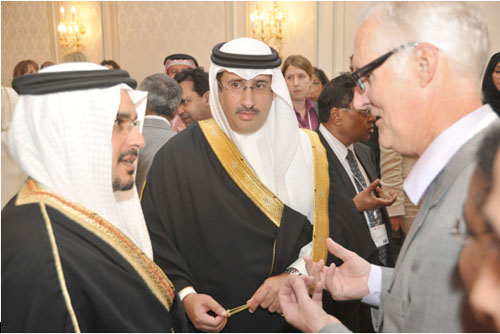
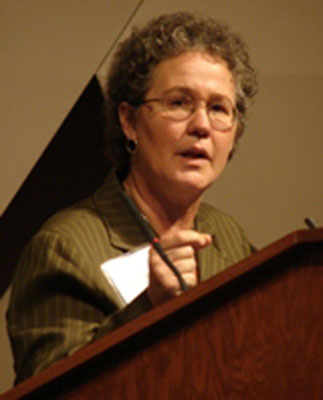


Recent Comments